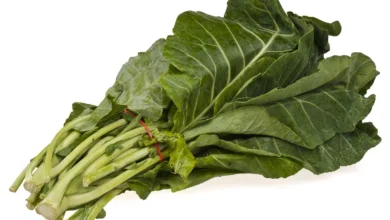Homemade Peanut Butter Dog Treats

There’s something special about watching your pup’s tail wag when they know a snack is coming. For over a decade, my kitchen has been filled with the warm scent of freshly baked goodies—starting with Scout, my golden retriever, who inspired this recipe back in 2013. Today, his legacy lives on through Mabel and Daisy, who still perk up the moment they hear the oven timer ding.
Creating snacks at home isn’t just about saving money or avoiding store-bought options. It’s about knowing exactly what goes into every bite. With simple ingredients like whole wheat flour and natural nut spreads, you can whip up soft, chewy bites that keep your furry friend excited and healthy. No fancy tools needed—just love, a mixing bowl, and maybe a cookie cutter shaped like a bone.
This tried-and-tested formula has been perfected for busy schedules. Mix, roll, bake—done in under an hour. Customize shapes or add a drizzle of honey for extra flair. Best of all? You’ll avoid harmful additives like xylitol, ensuring every treat is as safe as it is delicious.
Introduction to Homemade Dog Treats
Imagine your pup’s excitement when they get a snack made just for them. Store-bought options often hide mystery ingredients behind flashy packaging. By baking at home, you turn simple pantry items into wholesome rewards bursting with flavor—and trust.
Why Choose Homemade Treats?
Commercial snacks might contain fillers like corn syrup or artificial preservatives. “After my lab Max had allergy issues,” shares Sarah, a pet parent from Colorado, “switching to DIY recipes let me skip additives completely.” With a baking sheet and basic tools, you control every ingredient. Need grain-free? Swap flour. Prefer soft textures? Adjust bake minutes.
Benefits for Your Furry Friend
Freshly baked goodies support healthier coats, digestion, and energy levels. Sam, a Golden Retriever owner, notes: “Mixing dough together became our Saturday ritual—he licks the spoon, I shape the bones.” Tailor treats to your pet’s needs: crunchy for dental health or chewy for seniors. Just preheat oven to 350°F, and in 20 minutes, you’ll have a batch that’s safe, tasty, and full of love.
Essential Ingredients and Tools
Every great recipe begins with two pillars: fresh ingredients and practical equipment. Using high-quality items ensures your creations are both safe and satisfying. Let’s break down what you’ll need to get started.
Key Ingredients: Flour, Peanut Butter, Egg, and More
Start with 2½ cups of whole wheat flour as the base. Add 1 cup of natural nut spread (always check labels for xylitol-free options) and 1 large egg for binding. A splash of water or honey keeps the dough pliable. For pets with allergies, swap in rice or coconut flour.

Stick to precise measurements for consistent texture. “I use a kitchen scale for accuracy,” says Lisa, a pet nutrition blogger. “It prevents crumbly or overly sticky results.”
Must-Have Kitchen Equipment
- Baking sheet lined with parchment paper
- Rolling pin for ¼-inch-thick dough
- Cookie cutters or piping tips for shaping
- Mixing bowls and silicone spatula
A stand mixer saves time, but hand-kneading works too. Preheating your oven to 350°F ensures even baking. Store extras in airtight containers for up to two weeks—if they last that long!
Step-by-Step Recipe for Peanut Butter Dog Treats
Ready to create wholesome snacks your four-legged companion will adore? Follow this foolproof guide to craft bakery-quality goodies with minimal effort. Let’s dive into the process—no chef’s hat required!

Mixing and Forming the Dough
Preheat your oven to 350°F. In a large bowl, combine 2½ cups of whole wheat flour, 1 cup of natural nut spread, 1 egg, and ½ cup water. “The dough should feel like playdough—firm but pliable,” advises baker Mia Chen. If sticky, add flour one tablespoon at a time. Use a stand mixer’s paddle attachment or knead by hand for 3-4 minutes.
Rolling, Cutting, and Baking
Lightly dust your counter with flour. Roll dough to ½-inch thickness using a wooden pin. Cut shapes with cookie cutters or slice into squares. Place pieces on a parchment-lined baking sheet, spacing them 1 inch apart. Bake 18-20 minutes until edges turn golden. Cool completely before decorating.
| Dough Thickness | Bake Time | Texture |
|---|---|---|
| ¼ inch | 15-18 mins | Crispy |
| ½ inch | 18-20 mins | Chewy |
| ¾ inch | 20-22 mins | Firm |
Frosting and Decorating Tips
Melt ¼ cup nut spread with 1 tsp honey in the microwave (15-second bursts). Thin with water until pipeable. Transfer to a piping bag and drizzle over cooled treats. For festive flair, add crushed oats or carob powder. Store decorated snacks in an airtight container—they’ll stay fresh up to 10 days!
“My terrier goes crazy when I pull these from the jar—they’re his ‘birthday cake’ every month!”
—Jamie, Texas
Customizing Your Dog Treats: Variations and Storage
Tailoring snacks to your pup’s needs adds a personal touch they’ll love. Whether adjusting for allergies or experimenting with flavors, small tweaks can make a big difference. Let’s explore how to adapt recipes and keep creations fresh.

Alternative Ingredients for Dietary Needs
Swap whole wheat flour with rice or coconut flour for grain-sensitive pups. For softer textures, mix in mashed banana or unsweetened applesauce. “Oats add fiber and crunch,” notes pet chef Elena Rivera. Always measure substitutes precisely—too much moisture can turn dough sticky.
- Use pumpkin puree for digestion support
- Replace eggs with flaxseed gel (1 tbsp ground flax + 3 tbsp water)
- Opt for sunflower seed butter if nut-free
Related post: Are Milk Bones Bad For Dogs?
Safe Storage and Shelf-Life Tips
Cool baked goods completely before storing. Place them in an airtight container lined with parchment paper. For longer freshness:
| Storage Method | Duration | Thawing Time |
|---|---|---|
| Room Temperature | 1 week | N/A |
| Refrigerator | 2 months | 10 mins |
| Freezer | 8 months | 2 hours |
Label containers with prep dates. To serve frozen snacks, thaw small portions overnight in the fridge. A little creativity ensures every batch meets your pet’s needs!
Conclusion
Crafting snacks at home transforms simple moments into cherished rituals. By choosing wholesome ingredients and following precise measurements, you create rewards that prioritize health and happiness. Whether rolling dough to ¼-inch thickness or using cookie cutters for playful shapes, every step reflects care.
Remember to preheat your oven to 350°F and bake for 18-20 minutes. Let cool completely before serving—this ensures ideal texture and safety. The process isn’t just about mixing flour and eggs; it’s about building trust through transparency.
Share your creations online and tag fellow pet lovers. Did you swap in pumpkin puree or try a grain-free flour blend? Your tweaks might inspire others! With attention to bake times and storage tips, this recipe becomes a reliable staple.
Ultimately, homemade goodies strengthen bonds. They turn kitchen sessions into shared joy—one wagging tail at a time. Ready to start? Your furry companion’s excited grin awaits.
FAQ
Can I substitute whole wheat flour with another type?
Yes! Oat or coconut flour work well for pups with sensitivities. Avoid almond flour, as it can be harmful. Always check with your vet before switching ingredients.
Are sweeteners like honey safe to add?
Small amounts of unsweetened applesauce or mashed banana are safer alternatives. Never use xylitol or chocolate-based products—they’re toxic to pets.
How long do these baked goods stay fresh?
Store them in an airtight container for up to two weeks. For longer freshness, freeze portions and thaw as needed. Always check for mold before serving.
What if my dough sticks to the rolling pin?
Lightly dust your surface with flour or place parchment paper underneath. Aim for a ¼-inch thickness to ensure even baking without crumbling.
Can I skip the egg in the recipe?
Absolutely. A flaxseed or pumpkin puree mix makes a great binder. Adjust moisture levels gradually to maintain the dough’s consistency.
Is a bone-shaped cutter necessary?
Not at all. Use any pet-safe shape or create simple squares with a knife. Avoid sharp edges to prevent choking hazards for eager eaters.
Why preheat the oven to 350°F specifically?
This temperature ensures even cooking without burning. If your oven runs hot, reduce the time by 2-3 minutes and monitor the first batch closely.





